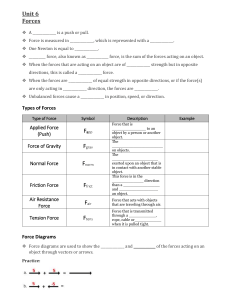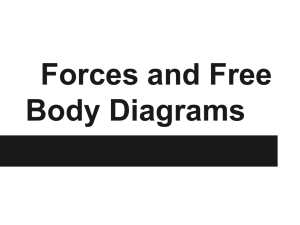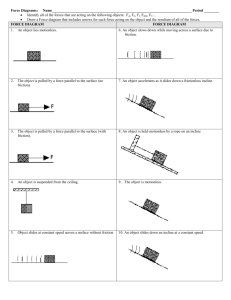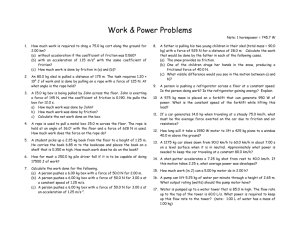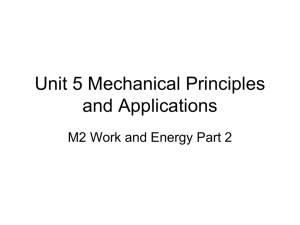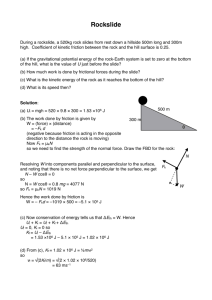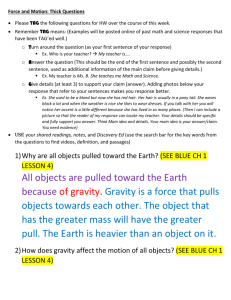Force-Vector Diagrams Worksheet: Physics Practice
advertisement
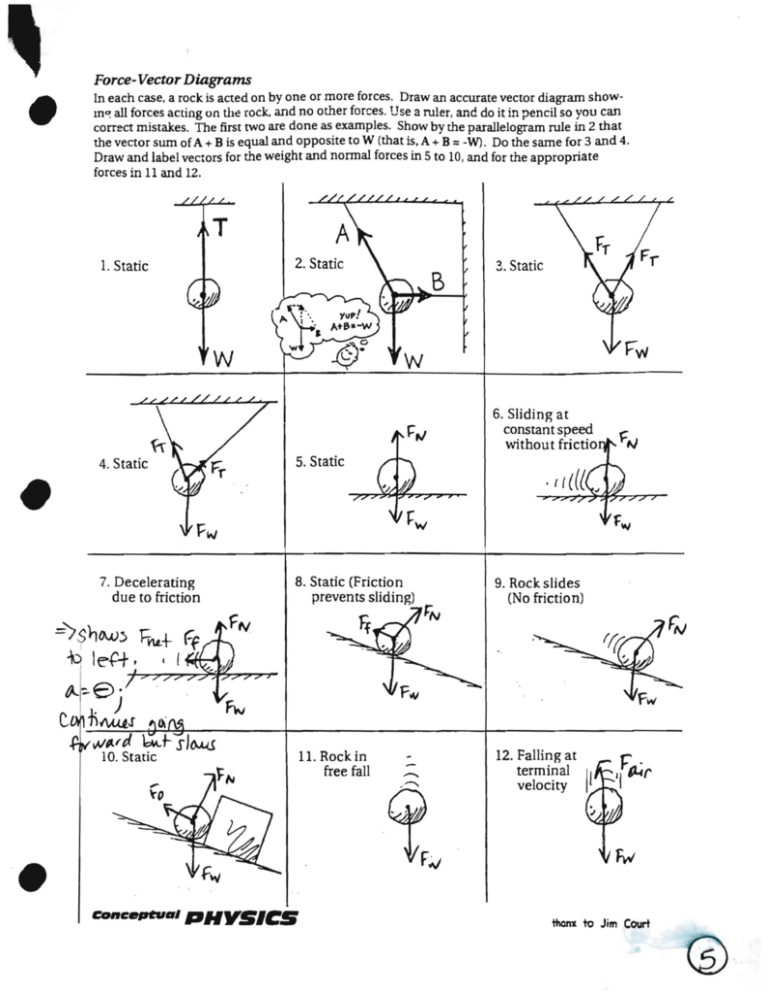
• Force-Vector Diagrams In each case, a rock is acted on by one or more forces. Draw an accurate vector diagram show­ all forces acting on the rock, and no other forces. Use a ruler, and do it in pencil so you can correct mistakes. The first two are done as examples. Show by the parallelogram rule in 2 that the vector sum of A + B is equal and opposite to W (that is, A + B -W). Do the same for 3 and 4. Draw and label vectors for the weight and normal forces in 5 to 10, and for the appropriate forces in 11 and 12. m~ = 1. Static 2. Static 3. Static 6. Sliding at constant speed without frictio 4. Static 5. Static 7. Decelerating due to friction 8. Static (Friction prevents sliding) 9. Rock slides (No friction) 11. Rock in free fall 12. Falling at terminal veloCity • • tncnx to Jim Court / 18. TJed to.J rope .Jnd pulled so that the rock moves horizont.Jlly .Jt mnstant velocity. Note: 11Iere must be air friction in this case, 20 Swinging en a rope. at lowest position. No friction. .......... ...... ..'" cons"nt .1: str.Ii~t d~ward. Tied to a rope pulled Ao::elerating downward at 19.6 m/Sl. No friction. I I 17. I .... .. . ~!a i ~ y ~ lS, Swinging en a rope. at the top oi. vertical circle, ~ '1~ L=== l~l~T-+-_ _ __ 14. Rising in a parabolic: tnjeetury. . 19. TIed to a rope aNi pulled so that the rod; accelerates horizontally .Jt 2g. No air. friction ,, ,--........ , , • I 1!. At the tap of a puUctic tIaje uy. ,, , , , I ,, I ,, I , 16. Tied to a lOpe and pulled sbaigbt upward. ActzIentinlJ upward at '.laa/sl. '. t: No . . ,.. ............. . . ". ..'F"" -- I I I .________________________________ _____________"r_ __________________ . 'I J be's J:""W L__ ~ ~rr •
